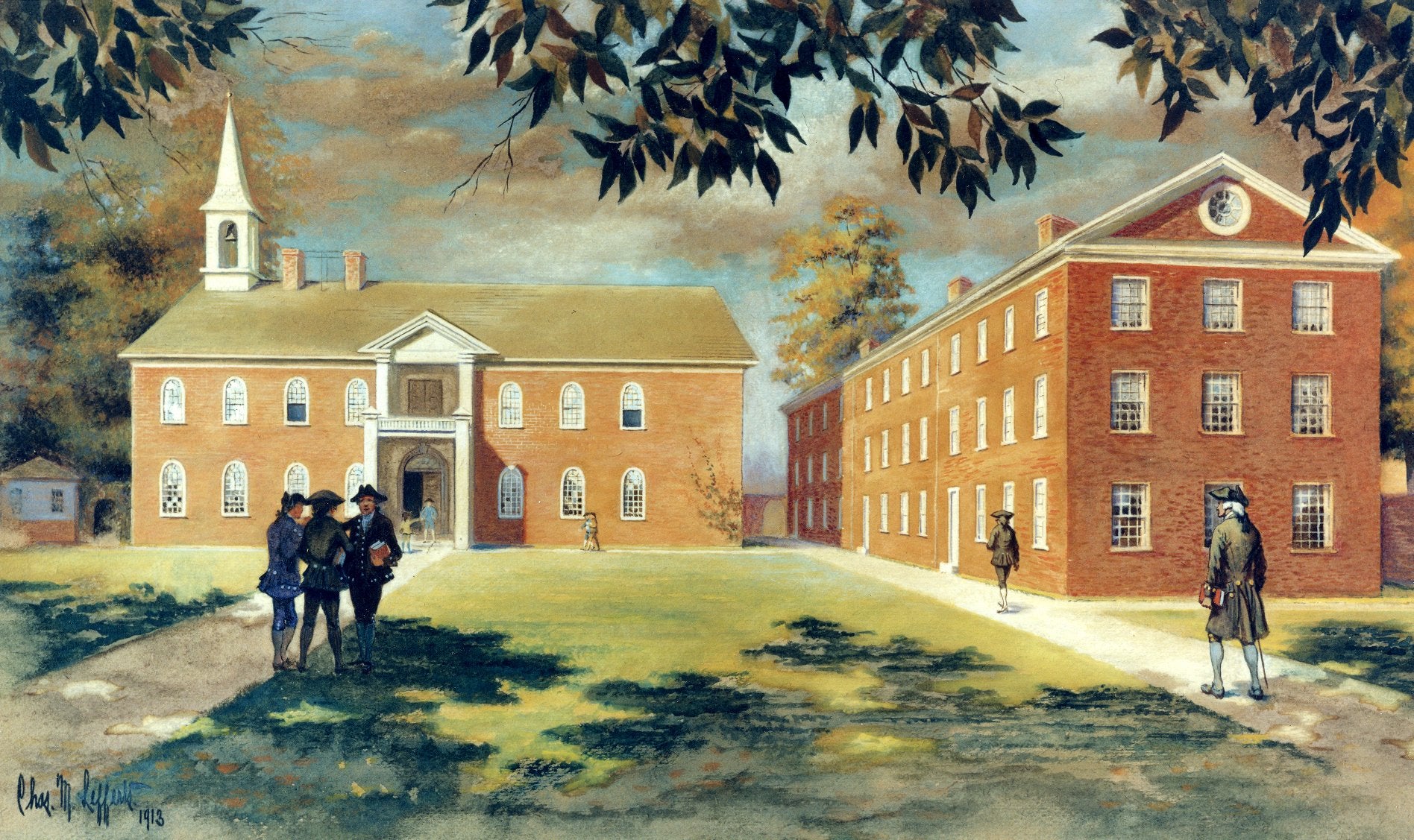Timothy Matlack, the second, was born in Haddonfield, New Jersey, to Martha Burr and Timothy Matlack, a Quaker merchant and brewer. The family moved to Philadelphia in 1746. In 1758 young Timothy married Ellen Yarnall, the daughter of Quaker preacher Mordecai Yarnall; they had five children. After the death of his first wife, Matlack in 1797 married widow Elizabeth Claypoole Copper.
Matlack, like his father, established himself as a hardware merchant and then as a brewer. Young Matlack enjoyed the sports of horse racing and cock fighting, both of which brought him into contact with people of all races and classes. After he fell into debt and was thrown into debtors’ prison, the Quakers obtained his release, even though the Philadelphia monthly meeting had disowned him in July of 1765. Quakers often criticized him for his association with the lower classes.
When the American Revolution came, Matlack emerged as a strong and colorful leader, an advocate of personal liberty and the security of property. His belief in the freedom and equality of all men led him to oppose slavery. Matlack served as a member of a number of military groups, one of which was the Fifth Rifle Battalion of Philadelphia Associators; as colonel of this battalion, he saw action at the Battle of Trenton in December of 1776 and then at the Battle of Princeton in early January of 1777.
Matlack held a variety of political offices during the Revolutionary era, including storekeeper of military supplies, delegate to the Pennsylvania Constitutional Convention, and member of the state Council of Safety. As clerk to the secretary of the Second Continental Congress, Matlack penned the official version of the Declaration of Independence on display in the National Archives. After he helped shape Pennsylvania’s radical one-house constitution in 1776, Matlack was elected secretary to the state’s Supreme Executive Council. During the next few years he achieved great political influence and held many offices. During this period he represented the commonwealth of Pennsylvania at the trial for the court martial of Benedict Arnold, and he wrote a number of newspaper articles (signed “T.G.”) attacking opponents of the constitution and James Wilson, leader of Pennsylvania Republicans.
Matlack was a director of the Bank of North America in 1781 and 1782, despite its Republican domination. Republicans, however, were becoming more influential and soon challenged Matlack’s political position. In 1782 he was removed as secretary to the Supreme Executive Council on charges of irregularity in the accounting. He contested the charges, and the proceedings against him were eventually dropped, but Matlack never regained his former political power. He lived briefly in New York in 1784, but soon returned to Pennsylvania, living out his life in Philadelphia, Lancaster, and Holmesburg. He remained in politics but was relegated to lesser political posts such as clerk of the state senate and state master of the rolls and Philadelphia alderman.
Matlack helped found the Society of Free Quakers in 1781. Matlack’s stands on the abolition of slavery and on the use of military force as well as his immoderate actions had separated him from the established Quaker community; after the death of his son Mordecai in military service during the Revolutionary War, Matlack had caned two Quakers who had criticized his sons for bearing arms against the British. The Society of Free Quakers was made up people like him, who had been disowned, or resigned from the Society of Friends, usually due to their wartime activities. The Library of Congress has recently discovered that Matlack designed the Free Quaker Meeting House which still stands at Fifth and Arch Streets in Philadelphia. At the time of his death in 1829 he was interred in the Society of Free Quakers burial ground.
Culturally, Matlack made other contributions as well. In 1780 he was elected to the American Philosophical Society, serving as a secretary of the organization from 1781 to 1783. Both Charles Willson Peale and Rembrandt Peale painted his portrait. In 1779, at the height of his influence, Matlack was elected a trustee of the University of the State of Pennsylvania (now the University of Pennsylvania), serving until his 1785 resignation.

